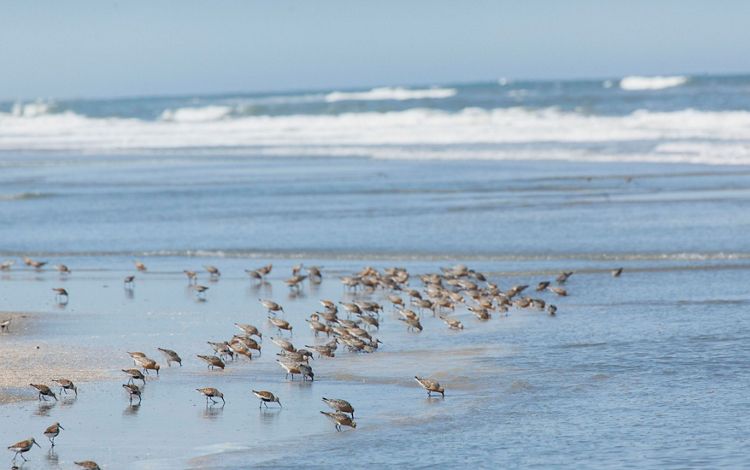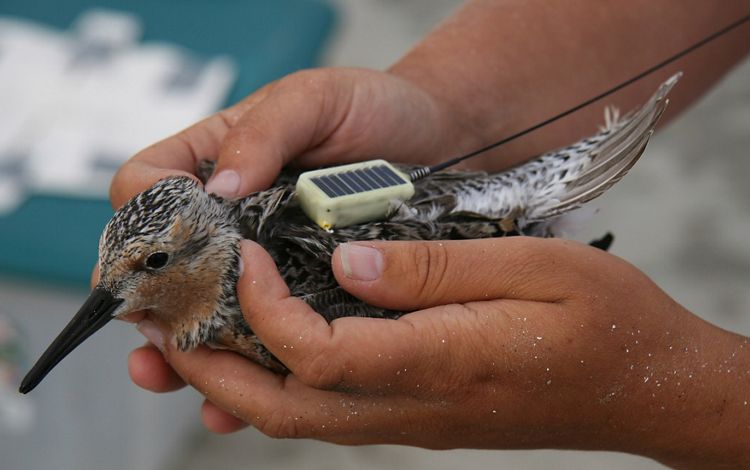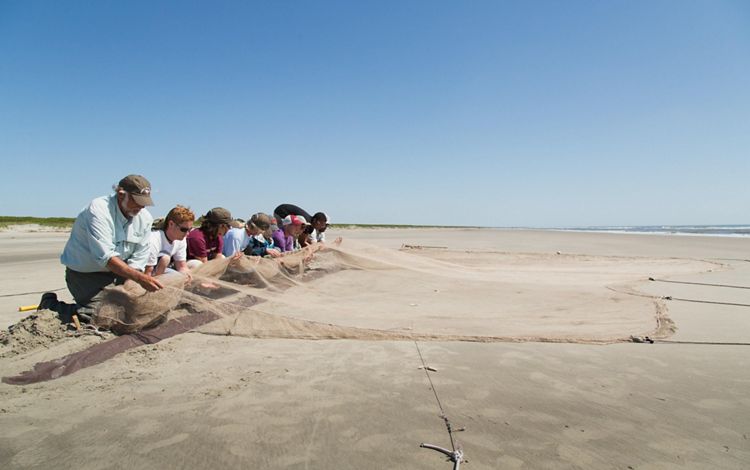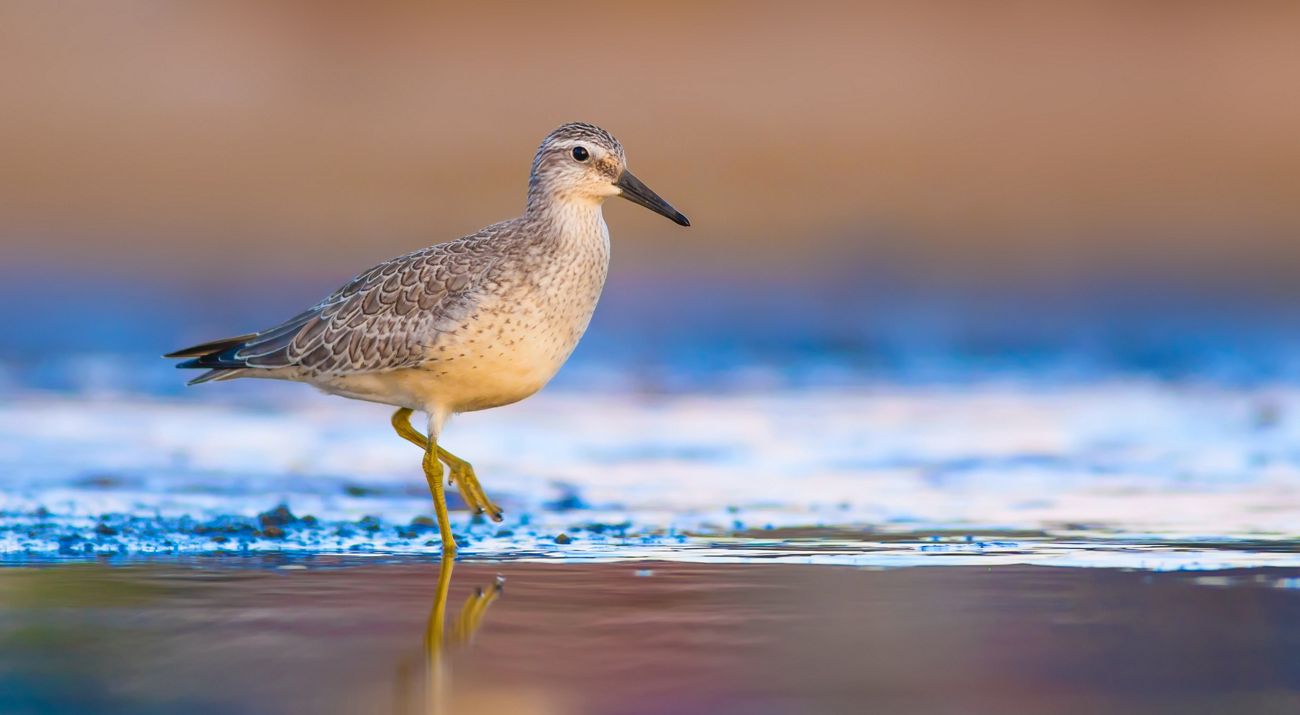Meet the Red Knot
Red knots are small, brownish birds that fly more than 9,000 miles from south to north every spring and repeat the trip in reverse every autumn, making this bird one of the longest-distance migrants in the animal kingdom. It’s an incredible feat for a creature with a wingspan of just 20 inches!
The farthest flung red knot populations spend the winter at the southern tip of South America, in Tierra del Fuego. Come spring, they’re on their way to the Arctic where they breed during the short Arctic summer. The Delaware Bay is the final and most critical rest stop for these migratory birds.
During May and June of each year, thousands of horseshoe crabs emerge from the depths of Delaware Bay to spawn along the shoreline. Red knots, relying on masses of tiny, green horseshoe crab eggs on the beach, descend on the area and gorge themselves for about one month in preparation for the final leg of their journey to their Arctic breeding grounds.



Protecting the Red Knot
Sadly, red knots are disappearing, and they face a growing horde of hazards throughout their range.
In the early 2000s, sudden declines of red knots were linked to the overharvest of horseshoe crabs in the Delaware Bay. Since then, the horseshoe crab harvest has come under better management oversight with help from The Nature Conservancy. Crab and red knot populations have stabilized, but have not yet recovered.
Another smaller but still important food source for red knots is at risk In Virginia, where knots feed on mussels and clams, certain mussel populations have been shifting northward each year as ocean waters warm. The Virginia Coast Reserve is now at the southern edge of those mussels’ range. Soon, that food source may disappear completely from the safe haven of the Virginia barrier islands.
Elsewhere, shorebirds find steep competition for habitat along beaches popular for recreation. And then, of course, there’s the fast-changing Arctic—the only place where red knots breed. Climate change could alter the birds’ nesting habitat, reduce food availability, and even make predators more likely to prey on visiting shorebirds.
To protect red knots and many other species, TNC is developing climate solutions. You can help too.
